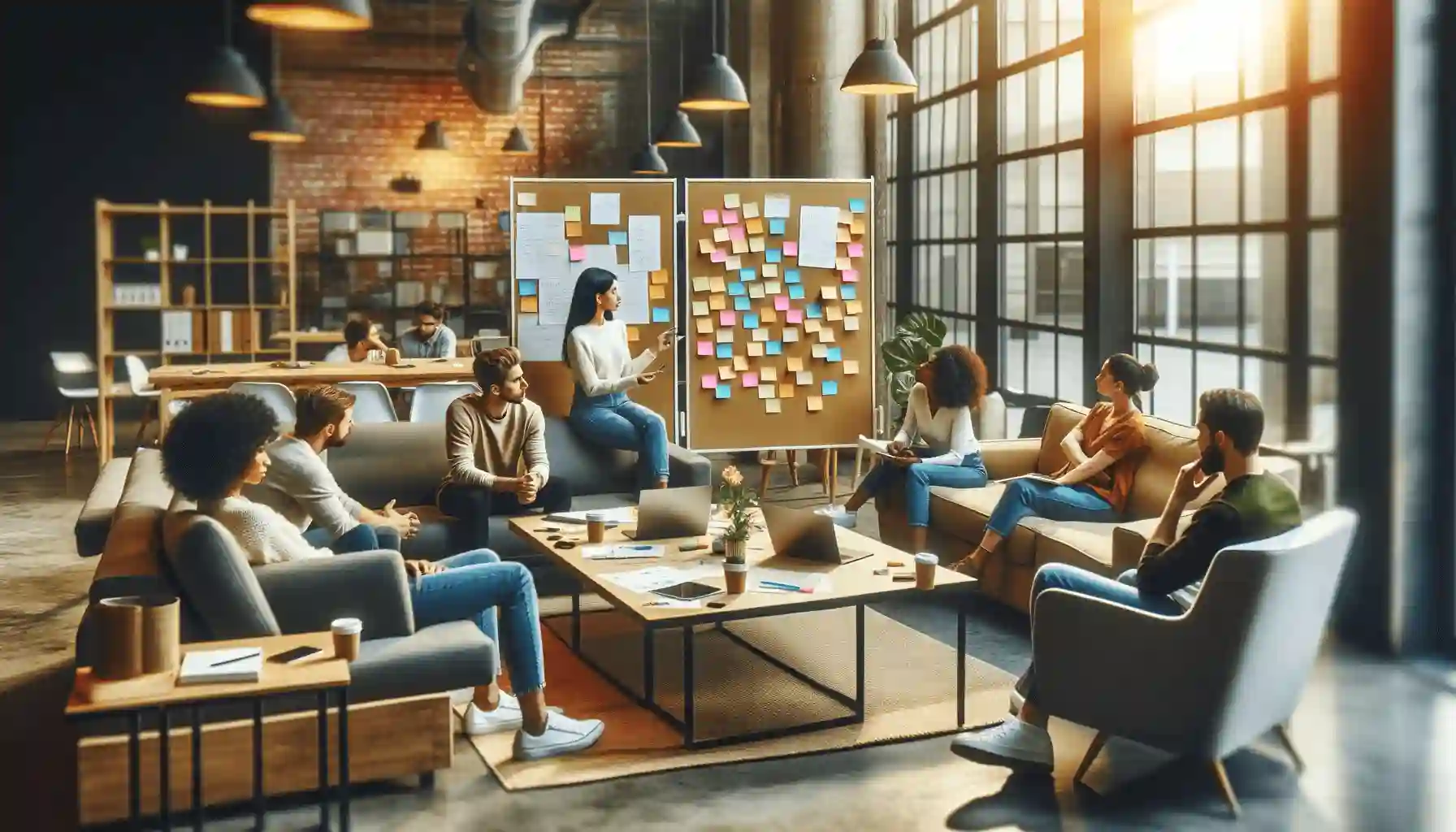Departmental Meeting
This guide will walk you through the essential elements of use departmental meeting to keep your attendees aligned and engaged.
Try Lark for Free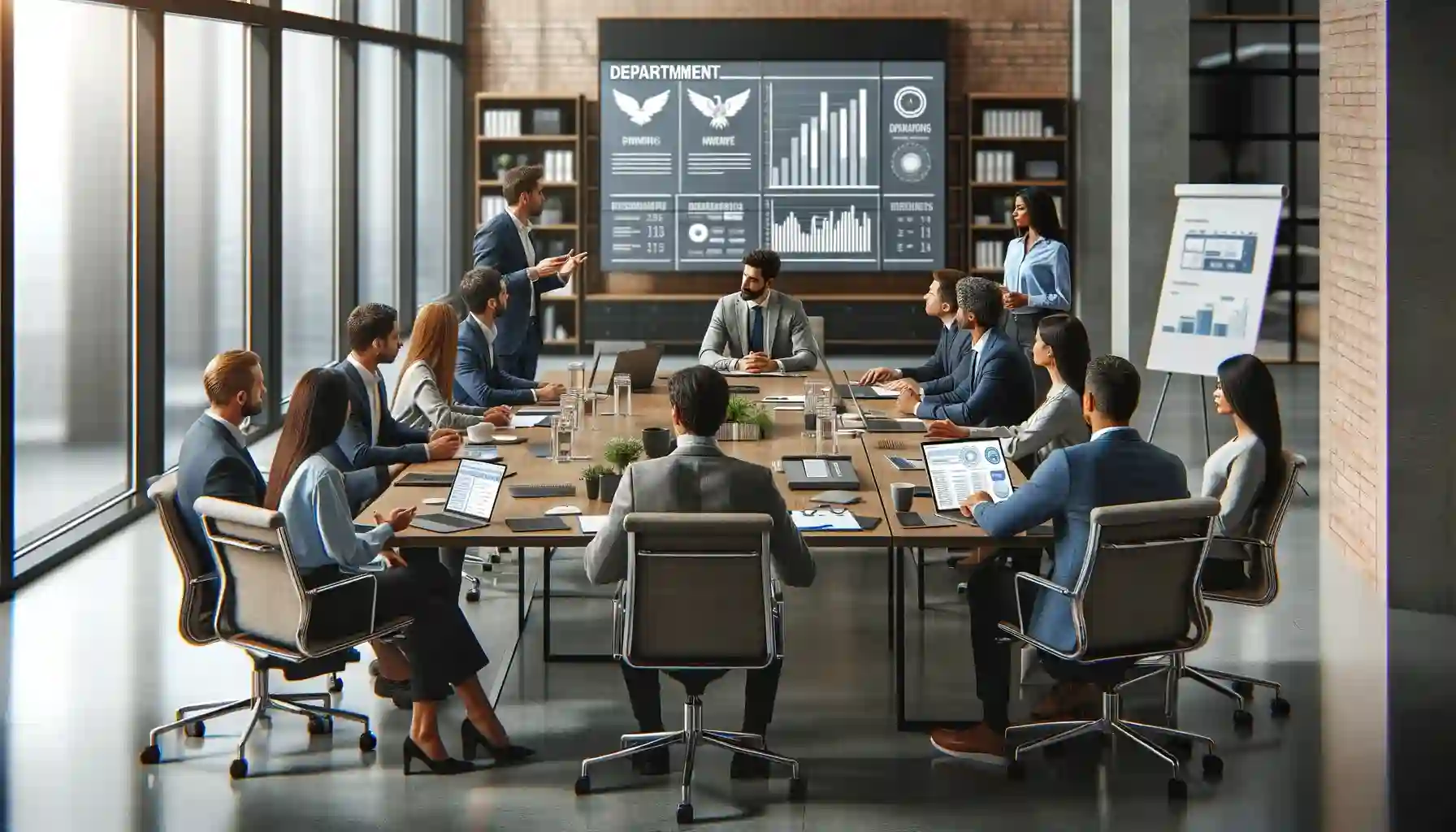
Departmental meetings play a crucial role in fostering collaboration, communication, and alignment within an organization. These gatherings provide departments or teams with a platform to discuss goals, initiatives, and progress while addressing challenges and celebrating achievements. In this comprehensive guide, we'll explore the significance of departmental meetings, how to conduct them effectively, and best practices for enhancing collaboration and efficiency.
Use Lark Meetings to turn meetings into true collaborative experiences.
What is a departmental meeting?
Facilitating Team Alignment
A departmental meeting is a regularly scheduled gathering of a specific department or team within an organization. These meetings serve as a forum for discussing departmental goals, projects, and challenges while promoting collaboration and unity among team members.
Goals of departmental meetings
Alignment and Efficiency
The primary goals of departmental meetings include:
- Alignment: Ensuring that all team members are on the same page regarding departmental goals and priorities.
- Communication: Providing a platform for open and effective communication among team members.
- Collaboration: Encouraging collaboration, knowledge sharing, and problem-solving.
- Progress Tracking: Reviewing progress on departmental initiatives and projects.
- Issue Resolution: Identifying and addressing challenges or obstacles that may impact departmental success.
Who should attend departmental meetings?
Comprehensive Participation
Departmental meetings typically involve team members and leaders who are directly associated with the department. Key participants may include:
- Department Head: The leader or manager responsible for overseeing the department.
- Team Members: Individuals actively involved in departmental projects and initiatives.
- Subject Matter Experts: Team members with specialized knowledge or skills related to the department's focus.
Learn more about Lark x Meetings
Topics and agenda for departmental meetings
Structured Discussions
An effective departmental meeting follows a structured agenda that covers essential aspects of the department's activities. Here are key topics to include:
- Welcome and Introduction: Begin with introductions and a brief overview of the meeting's purpose.
- Departmental Goals and Objectives: Provide context by summarizing the department's short-term and long-term goals.
- Progress Updates: Review progress on key departmental initiatives, projects, and tasks.
- Challenges and Concerns: Discuss challenges, obstacles, or issues encountered and explore potential solutions.
- Collaborative Discussion: Encourage open discussion and collaboration to address department-related topics.
- Action Items: Define action items and responsibilities for follow-up tasks.
- Knowledge Sharing: Share insights, best practices, or updates relevant to the department's focus.
- Next Steps: Outline the next steps and strategies for moving forward with departmental initiatives.
- Recognition and Appreciation: Acknowledge team members' contributions and celebrate achievements.
- Closure and Recap: Conclude the meeting with a recap of key takeaways and action items.
How to conduct an effective departmental meeting?
Collaboration and Efficiency
Conducting an effective departmental meeting requires careful planning, engagement, and facilitation. Here's a step-by-step guide to ensure a productive discussion:
- Preparation: Define the meeting's objectives, create an agenda, and invite relevant participants.
- Agenda Distribution: Share the meeting agenda in advance to allow participants to prepare and contribute effectively.
- Meeting Facilitation: Appoint a skilled facilitator or leader to guide the meeting, maintain focus, and manage time.
- Progress Review: Begin with a review of departmental progress on key initiatives and projects.
- Challenges Discussion: Encourage open discussion about challenges, obstacles, or issues encountered.
- Collaborative Solutions: Foster collaboration among participants to address challenges and find effective solutions.
- Action Item Assignment: Define clear action items, assign responsibilities, and set timelines for follow-up tasks.
- Knowledge Sharing: Encourage team members to share insights, best practices, or updates relevant to the department's focus.
- Next Steps: Outline the next steps and strategies for moving forward with departmental initiatives.
- Recognition and Appreciation: Acknowledge team members' contributions, celebrate achievements, and boost morale.
- Closure and Recap: Conclude the meeting with a recap of key takeaways, action items, and a sense of unity.
Learn more about Lark x Meetings
Examples of departmental meetings
Real-world scenarios
Real-world scenarios
Let's explore three real-world scenarios of effective departmental meetings in different contexts:
Scenario 1: Marketing Department Monthly Meeting
Brief Content: The marketing department conducts a monthly meeting to discuss campaign performance and plan upcoming marketing strategies.
Detailed Content: The meeting begins with a warm welcome and an overview of the department's monthly objectives. Team members present data on recent marketing campaigns, including metrics such as website traffic, conversion rates, and social media engagement. Challenges, such as unexpected shifts in consumer behavior, are openly discussed. The team engages in a collaborative discussion about potential adjustments to marketing strategies, including reallocating resources to more successful channels. Action items are defined, including the launch of new ad campaigns and content optimizations. The meeting concludes with a sense of unity and determination to achieve their monthly goals.
Scenario 2: Software Development Team Scrum Meeting
Brief Content: A software development team conducts a daily scrum meeting to coordinate tasks and address any obstacles in their Agile development process.
Detailed Content: The daily scrum meeting begins with a quick stand-up format, where each team member provides a brief update on their progress from the previous day and their plans for the current day. Any obstacles or challenges are raised, and team members collaborate to find solutions or offer assistance. The meeting fosters a sense of transparency and accountability among team members, enabling quick adjustments to the development process. Action items are defined, including task reassignments or additional testing. The meeting concludes with a clear understanding of the day's priorities and a commitment to Agile principles.
Scenario 3: HR Department Quarterly Review
Brief Content: The Human Resources (HR) department conducts a quarterly review meeting to assess progress on talent acquisition, employee engagement, and compliance initiatives.
Detailed Content: The meeting begins with a comprehensive overview of the HR department's quarterly objectives and key performance indicators (KPIs). HR leaders present progress reports on talent acquisition efforts, including candidate sourcing, interviews, and onboarding. Employee engagement survey results are analyzed, highlighting strengths and areas for improvement. Compliance updates related to labor laws and regulations are discussed. Challenges, such as increased competition for top talent, are openly addressed. The team collaboratively explores potential adjustments to recruitment strategies and employee engagement initiatives. Action items are defined, including refining recruitment processes and implementing training programs. The meeting concludes with a renewed commitment to attracting and retaining top talent.
Tips for do's and don'ts
Best Practices and Pitfalls to Avoid
To ensure productive and effective departmental meetings, follow these do's and don'ts:
| Do's | Don'ts |
|---|---|
| Define clear meeting objectives and communicate them to participants. | Don't allow meetings to become unstructured or off-topic. |
| Encourage active participation and input from all team members. | Avoid monopolizing the discussion or excluding team members. |
| Foster a collaborative and inclusive environment for discussions. | Don't rush through topics; allocate sufficient time for meaningful discussions. |
| Keep meetings focused on the department's goals and priorities. | Avoid dwelling on issues that are not relevant to the meeting's objectives. |
| Define and assign clear action items with responsible team members. | Don't neglect to follow up on action items and track progress. |
Use Lark Meetings to turn meetings into true collaborative experiences.
A Game Changer for Departmental Meeting: Empower your team with Lark Meetings
In the fast-paced and dynamic world of modern business, effective communication and collaboration are crucial for success of Departmental Meeting. Here we introduce Lark Meetings to serve as a centralized hub for all communication needs.
Transform your meetings into collaborative endeavors
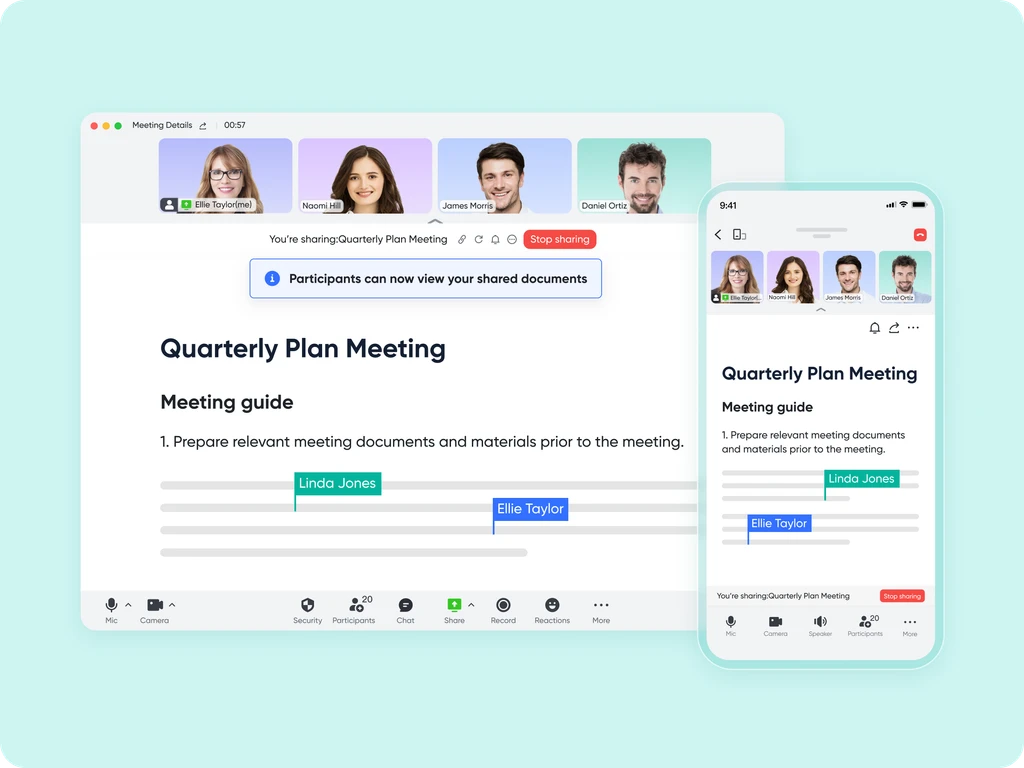
Leverage the potency of in-call document sharing, intelligent meeting minutes, and mobile-optimized features to enhance productivity collaboratively, irrespective of your location or schedule.
Seamlessly collaborate in real-time, across any device
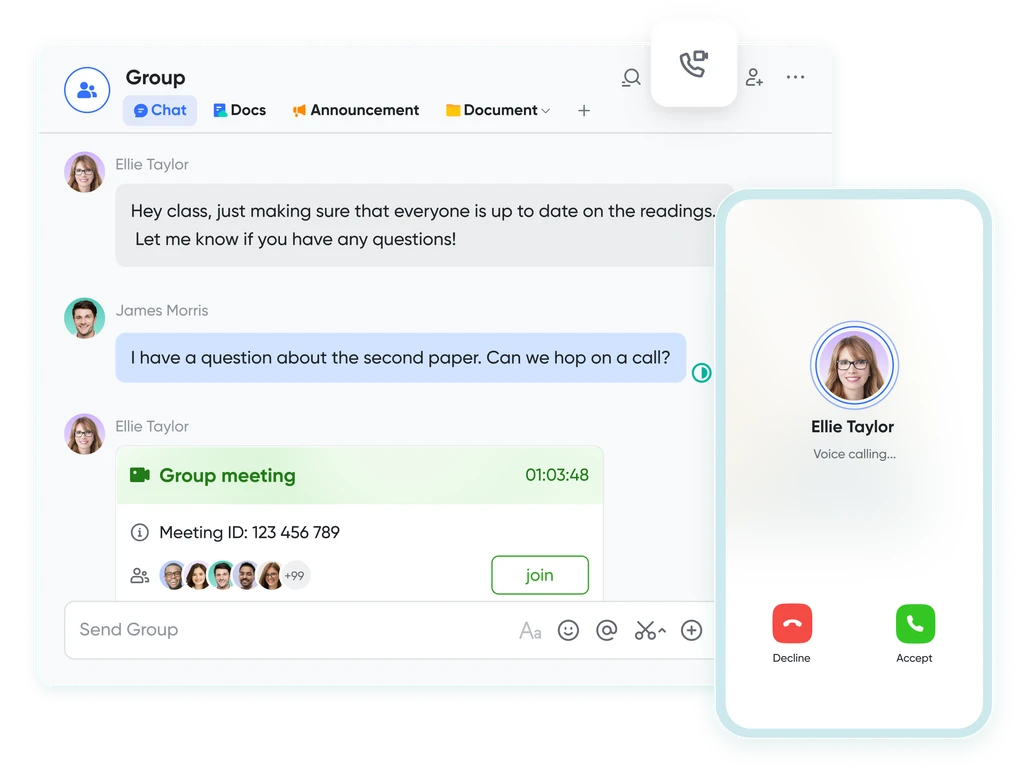
Share live documents instead of just screen views. Participants can navigate and edit simultaneously within the video call window, even while on the move.
Shift your focus to engagement, not note-taking
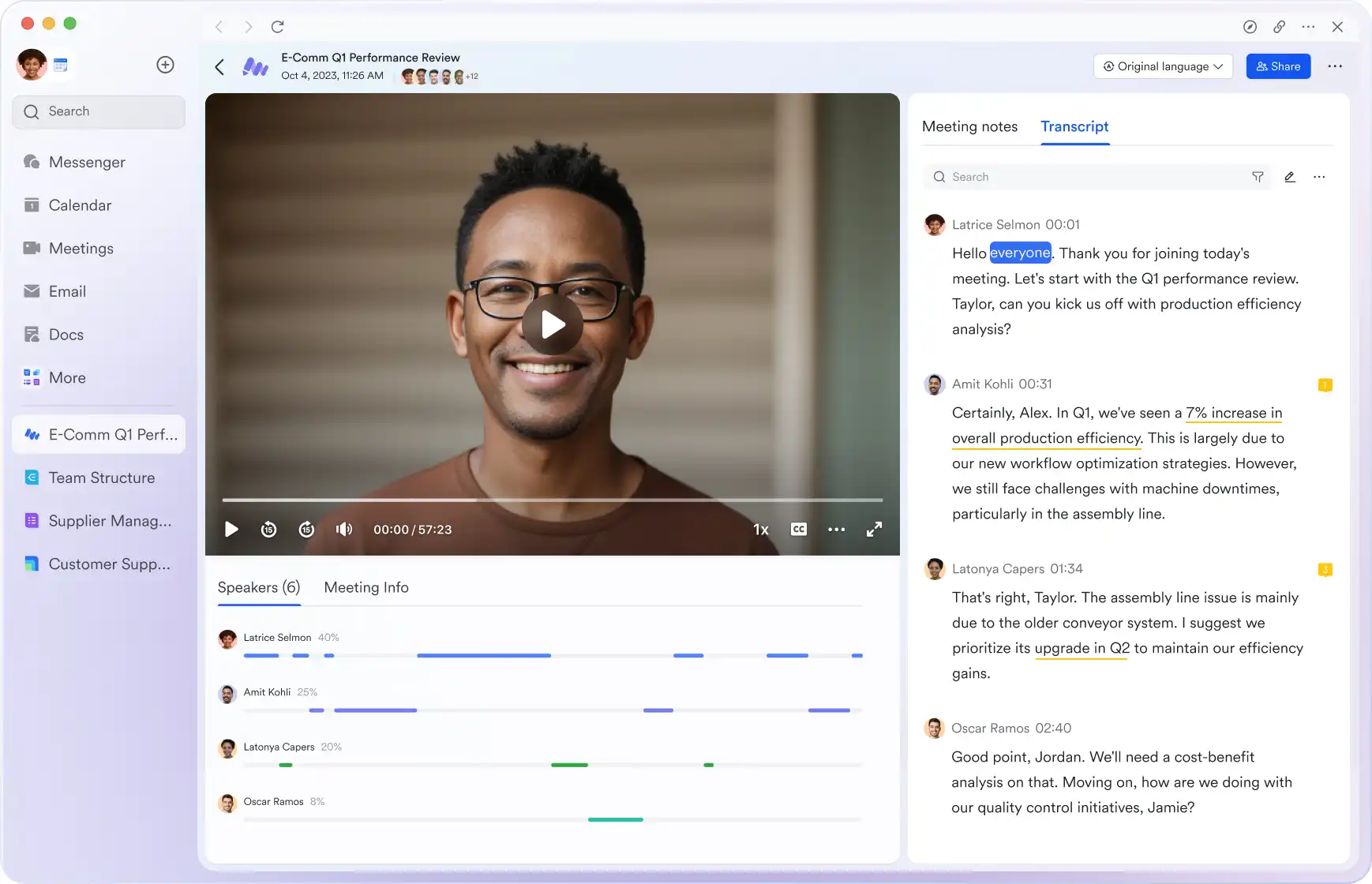
Lark Minutes automatically converts video meetings into transcripts, facilitating easy viewing, searching, and collaborative editing. Stay in the loop asynchronously, even if you can't attend the live meeting. Lark Minutes for meeting minutes support translation into 10+ different languages.
Break language barriers in communication
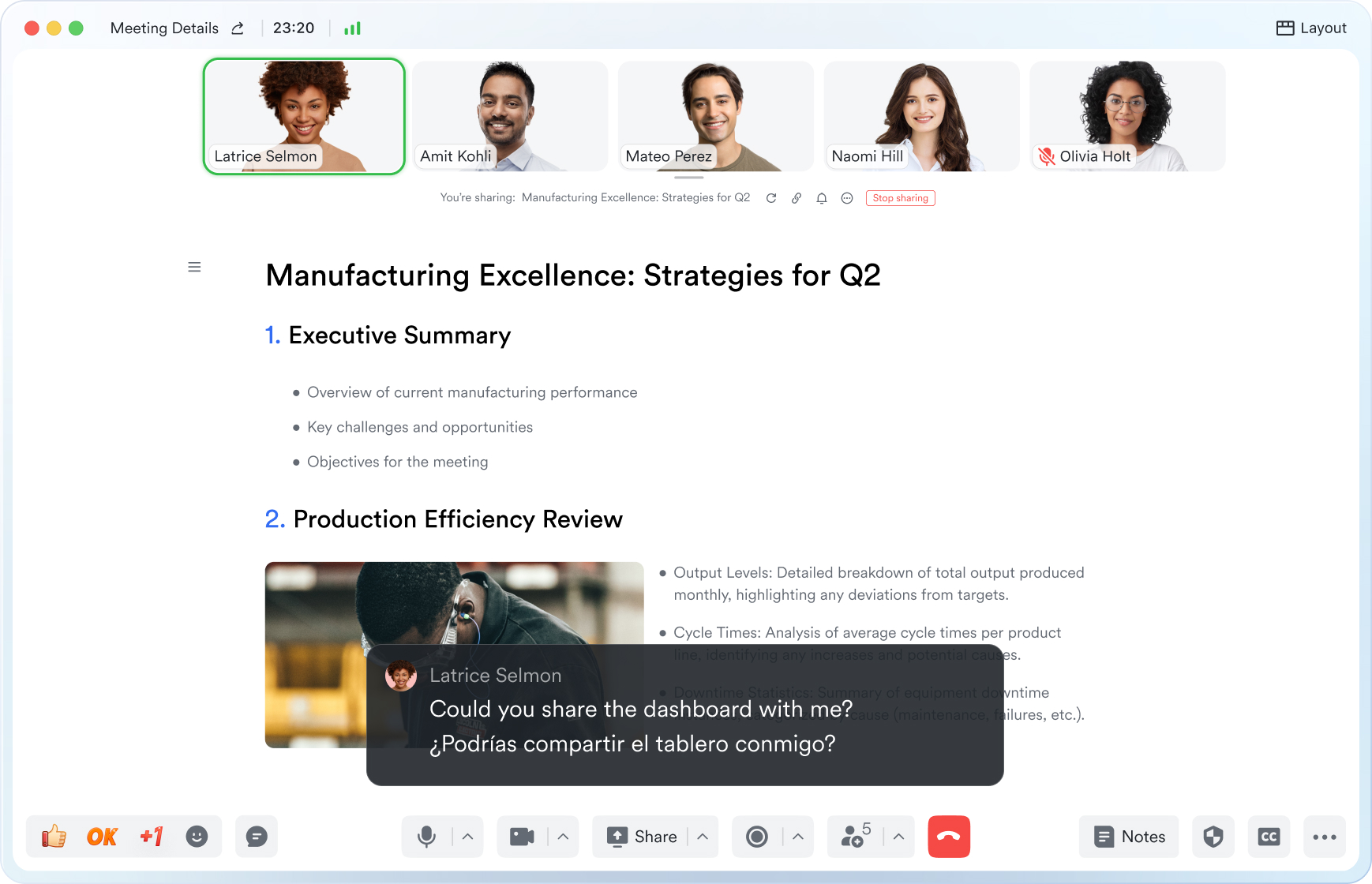
Lark Meetings provide real-time translation for subtitles, allowing individuals from diverse backgrounds to express themselves in their native languages. Ensure every voice is heard, regardless of geographical location. Live subtitles currently support translations from English, Chinese, and Japanese to 10+ different languages. See more translation feature in Lark.
Connect with larger audiences
Host dynamic online meetings and events accommodating up to 1,000 participants, with the flexibility of up to 50 breakout sessions for intimate group discussions within the larger meeting context. Try more Lark features for free.





